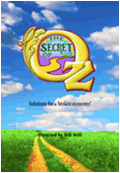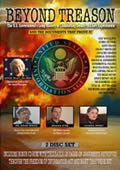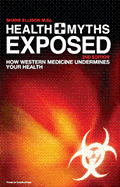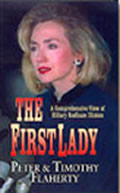THIMEROSAL,
AUTISM'S DADDY
PART 2 of 2
By
Jon Christian Ryter
October 28, 2010
NewsWithViews.com
In their world alert on June 29, the EAEMP identified what they termed "...the well-recognized problem with thimerosal," and detailed the potential risks of the preservative. Those risks include, but are not inclusive of nephrotoxicity, nerve damage, and hypersensitivity to the vaccines themselves, causing allergic reactions. The concern of this writer is, at the moment, what the CDC did with that report when they received it from the EAEMP, and how the IAG—including the same Dr. Norman Baylor who attended the April19 meeting—responded to the report when they received it from Robert Breiman of the National Vaccine Program Office on June 29. The normal sluggish wheels of the federal government of the US speedily chugged into action--not to issue a national alert of their own advising physicians and health care workers to immediately suspend inoculations containing Thimerosal until the vaccine supplies containing ethylmercury preservatives could be replaced with vaccines utilizing a safer preservative, or even to address the potential problems thimerosal posed on those whose accumulated ingestion of the drug had exceeded 200 Hg. Instead, the wheels of government churned out the first of two drafts of "talking points" on how to address the EAEMP white paper when the news hit the media...talking points to minimize the potential outrage .
That was the report. Parts of it may have been edited and/or embellished by rewriting by websites who picked it up and added a word here and there until I can no longer identify what was my original work. The original article was written 11 years ago. And, since AOL killed all of their subdomain websites five or six years ago, that material no longer exists.
The initial article was posted by a reader on Free Republic. On July 2, the DHHS called a special meeting in Washington for July 4 to discuss the ramifications of the Jon Christian Ryter article. It was decided, during that meeting, that a mainstream media newspaper article should discredit my article and reduce it to the ramblings of the vast rightwing conspiracy. A rebuttal article was prepared during that meeting. It was supposedly released to the AP the following day. But, by 10 p.m. on July 4, a few hours after it was composed in the meeting, I received it by fax. I posted the story on my website—scooping the "AP" with their own story by 24 hours. Again, since there was not enough people reading my site in 1999 to qualify as a gas burp on the radar screen, it was not until the "real" AP story appeared a day later and one of my site's readers posted my website posting and the AP story—and the dates both appeared—side-by-side on Free Republic.
That's when the London Sunday Times noticed it. They called me about 2 a.m. that same night. I faxed them enough of my files on thimerosal to write their own article. The World Health Organization, which had been warning both individual people and nations about thimerosal since the Soviets did clinical studies on thimerosal poisoning that in 1977 concluding that tubular necrosis, nervous system injury, brain damage, coma and death in elderly patients who had a lifetime of being innoculated with, or using pharmaceuticals containing, mercury preservatives.
The World Health Organization did a partial to complete ban on the used of thimerosal as a pharmaceutical preservative in Europe from 1995 and 2005. On July 7, 1999 the American Academy of Pediatrics and the US Public Health Service called for a ban on vaccines containing thimerosal. By 2001, all vaccines for use on children under the age of seven were available without thimerosal, or with only trace amounts of the ethylmercury substance.
The CDC, which continues to support the use of ethylmercury as a preservative, still argues that "...no scientifically conclusive evidence exists of harm from exposure to thimerosal preservative-containing vaccine, whereas evidence is accumulating of lack of any harm resulting from exposure to such vaccines.. Therefore, the benefits of influenza vaccination outweigh the theoretical risk, if any, of thimerosal exposure through vaccinations." Thimerosal was created by Eli Lilly in the late 1920s to add "shelf-life" to vaccines and other pharmaceutical items. And, although the toxicity nature of mercury has never been in question, thimerosal has been the preservative of choice for pharmaceutical companies all over the world until the WHO began fighting its use in the mid-1970s.
Interestingly, my burp on the radar screen in 1999 caught the attention of author David Kirby who included portions of this exchange in his New York Times best-selling book, EVIDENCE OF HARM which is now being sold as an Internet book by Google. On page 45 of his book, Kirby noted that "...One week before the government went public with the news..." (about thimerosal) "...word was leaked to a conservative Internet columnist...Jon Christian Ryter. On July 1, his warning appeared on a right-wing site called FreeRepublic.com. "Warnings on thimerosal will be played down by National Vaccine Program Office of the CDC on Friday," his headline said. Ryter claimed to have a document implicating the CDC in a cover-up in order to "play down the danger of the chemical thimerosal, simply because the government can't afford to dispose of its inventory of this substance."
Kirby continued, adding: "According to Ryter, the European Agency for Evaluation of Medicinal Products had recently called thimerosal a 'well-recognized problem' that can cause nerve damage. But the sluggish wheels of the US federal government speedily chugged into action—not to issue a national alert of their own. The risks were acceptable to them. Are the risks acceptable to you? The choice is yours, even though the CDC seems to think the choice is theirs."
Kirby further noted that the CDC issued a statement on thimerosal the following Friday afternoon when, as I noted, official Washington dumps its most dismal news knowing that few Americans pay attention on Saturday. Kirby concluded, saying: "He was right." It never ceases to amaze me how one small voice can be heard around the world. If we have a website, all of us have that long-reaching voice. Maybe it only reaches a handful of people at a time, but ultimately, it's a voice that reaches around the world. I guess that's why Barack Obama and the globalists feel its now time to silence the blogsphere, and why Utopian Congressmen and Senators on both sides of the aisle believe they have the constitutional right to abridge our right of free speech when it interferes with the agenda of those swiftly moving toward one world government.
While I initially thought the recent inquiries about my old thimerosal article were due to Kirby's book showing up on Google's Internet book service, it appears now it's more likely due to the US Supreme Court weighing in on the case of Bruesewitz v Wyeth, and the question of whether or not a pharmaceutical company can be sued for injuries caused by their vaccines. At the center of the lawsuit is the National Childhood Vaccines Injury Act of 1986 which protects manufacturers from being driven out of business by tort claims. When Congress enacted the law, it also created, within the Court of Federal Claims, a Vaccine Court to arbitrate cases where parents and their lawyers could argue that the vaccinations given to them or to their children causes what malady resulted after the shots were administered. In Bruesewitz v Wyeth Hannah Bruesewitz's parents argued that the innoculation for diptheria, pertussis and tetanus [DPT] created seizures which left their daughter disabled. In 1998 Weyth replaced the formulation and removed the old vaccine off the market. In their lawsuit, the Bruesewitzs argued that what Weyth and the FDA did was too little, too late.
The Vaccine Court found the Bruesewitz's lawyer did not prove the injury was caused by the vaccine. The case was moved to federal court where the judge ruled that the family's claim for damages was preempted by the federal law that barred them from suing Weyth Labs. The Third Circuit Court of Appeals agree with the Distruct Court. In a pre-trial hearing to determine if the case proceeds to trial, the lawyers for the Brusewitz family argued that the National Childhood Vaccines Injury Act did not close the door to all lawsuits, and that the language left room for debate on the subject.
Chief Justice John Roberts responded to the plaintiff's lawyer's argument that he found little room for debate by saying, "I would have thought the argument would go the other way: that because they set up a compensation scheme, that was a good sign that they didn't want to allow state law claims." Justice Anthony Kennedy posed the question of whether or not the pharmaceutical industry could survive the assault of new tort claims if the court decides to hear Bruesewitz v Wyeth. The Obama Administration filed an amicus brief in favor of Weyth Labs in this case. While the Bruesewitz v Wyeth case is not about autism, waiting in the wings are hundreds of cases that are.
Those parents waiting for their day in court may or may not find that Bruesewitz v Wyeth is the ticket of admission. In 2008, in Riegel v Medtronic, the Supreme Court sided with the immunity granted pharmaceutical companies from the National Childhood Vaccines Injury Act. And even though the Roberts Court does not appear ready to undo those protections they may have to because of a 2006 ruling by the 5th US Circuit Court of Appeals. The 5th Circuit allowed families suing three vaccine manufacturers to bypass the Vaccine Court sue the vaccine companies. The plaintiff's argument was that the problem that caused autism was not the vaccine, it was the preservative, thimerosal. Since thimerosal is not a vaccine, it isn't be covered by the shield of protection that protects vaccines under the National Childhood Vaccine Injury Act.
The case involved two brothers in Mississippi, Robert Edgar and Mattheew Clayton Holder who received a series of vaccinations to immunize them from childhood diseases. Both boys were diagnosed with autism. In March, 2006 Jay Kilpatrick, a Jackson, Mississippi lawyer, argued on behalf of the Holder family and won the first major victory in a thimerosal case. Kilpatrick argued that the National Childhood Vaccine Injury Law covered only the vaccine, not the preservatives used by the pharmaceutical company to extend the shelf life of the vaccine. The court agreed and pulled the shield of protection away from the pharmaceutical companies who manufacture thimerosal.
| Subscribe to the NewsWithViews Daily News Alerts! |
In 2002, Sen. Bill Frist [R-TN], a medical doctor, dropped a midnight rider into an approrpriations bill that specifically mandated that claims against thimerosal manufacturers must be brought in the Vaccine Courts. That provision was repealed in 2003 but the Vaccine Court still acts like the law is still in effect. Kilpatrick is still fighting his thimerosal case in court—but it's a regular US District Court and not the Federal Court of Claims. If he wins, the laiability is owed by the pharamaceutical companies and not the taxpayers. To prevail, he has been told by the federal court in Mississippi that it is not enough to prove that the Holder boys' autism is a result of thimerosal, he must prove which of the three pharmaceutical companies produced the thimerosal that caused the autism in his clients. When Congress, which receives hundreds of millions of dollars from Big Pharma, wants to protect their "corporate constituents,"they place the bar so impossibly high that not even an Olympian can hurdle it. For part one click below.
Click here for part -----> 1,













 Share
This Article
Share
This Article






